11.05.2007
R.Sherbakov. AT HIS HEART'S CALLING
Alexander Panchenko Pancha had many pupils, and though not every one of them has become successful in chess, I have no doubt that Panchenko School is not just a pleasant memory for every one of them. In the beginning of 1980s a real live GM was a kind of an alien who had just flown to Earth from some other planet to us– so we all used to fly to the sessions of his school like arrows from the bows. Naturally The Coach felt this mood. It just could not be otherwise: the way Alexander Nikolaevich gave himselfto working with children can only be called a self-sacrifice.He had inspired all the students and their coaches with his enthusiasm; many of them were taking an active part in the school activities.Misha Ulybin's coach Dmitry Volovik, my own coach Mikhail Getmanchuk and many others who had come from different corners of Russia – coming home we all used to bring with us the atmosphere of the School and, of course, a small part of the wonderful Man and outstanding Coach's generous soul... I'd like to particularly stress that at the moment of the school establishment Alexander Nikolaevich's chess career was on the rise, he was in his prime. I know from my own experience that it is impossible to combine serious coaching with participation in competitions. One has to choose. A creative person alwayslongs for more interesting work that he really cares for – and for Pancha his own achievements always were something not especially important, but you should see his joy at successes of his students! But sheer enthusiasm is not enough to train so many strong chessplayers – one should also have an outstanding coaching talent and, of course, the deepest understanding of chess.Alexander Nikolaevich was endowed with those qualities in full measure, and I'd like to show this by giving some concrete examples. The school would begin with endgame. The first sessions were dedicated to the final stage of the game - starting from pawn endings, all kinds of endgames were gradually being studied. There were obligatory exams on the subjects that had been studied during the last session – you had to come in front of the class and answer the questions. I'll never forget how I have flunked the rook endgames; since then I know Keres study by heart! The knowledge of each piece's peculiarities, being able to see the endgame outlines would help us even in unknown opening situations- typical positions and plans in the middle of the game, more detailed study of the opening formations would appeared later as our chess strength grew. I guess that such an approach has laid a serious foundation for every one of us... Pancha especially loved bishop pairs. He would teach us to convert this kind of an advantage with particular care. I remember how I've been chasing the enemy bishops for years – to think only about the variation 1.d4 d5 2.¤f3 ¤f6 3.Ґf4 ¤h5!? in which I managed to win about a dozen of the games even in times when I practically became a GM already. Some examples on the subject of converting a pair of bishops from Panchenko's practice simply ask for a textbook: A.Panchenko – Z.Azmaiparashvili Dnepropetrovsk 1980 28...ўe7. Despite his more active position Black can only wait – any careless motion is fraught with consequences while playing against a pair of bishops! As Alexander Nikolaevich would tell at the studies, you must win such endgames 8 times out of 10 at the very least! 29.b3 Ґc5 30.Ґb2 Ґd6 31.f4! exf4 32.exf4. Black passed pawn does not matter, but it is important for White to obtain pawn majority on the flank. 32...ўf7 33.ўf3 ¤g8 34.Ґd7 ¤f6 35.Ґf5 ¤g8 36.g4 ¤e7 37.Ґd7 37...g5?! As Panchenko himself noticed, this alluring move only makes White's task easier. A passed pawn supported by two bishops is a terrible force! 38.f5! Ґxh2 39.Ґe6+ ўe8 40.Ґg7. A typical method – at first we let in a bishop. 40...¤c6 41.Ґxd5 ¤e5+ 42.ўe4 ¤xg4 43.f6. All the rest is simple. 43...¤e5 44.ўf5 ¤f7 45.Ґc6+ ўd8 46.ўe6 ўc7 47.Ґf3 From the h5-square the bishop will support its passed pawn while impeding the opponent's pawns at the same time. 47...¤d8+ 48.ўd5 Ґd6 49.Ґh5 ¤c6 50.f7 ¤b4+ 51.ўc4 Ґe7. The pawn was untouchable: 51...¤xa2? 52.Ґe5! 52.a4 ¤c2 53.f8Ј, and White won. 1–0 Speaking of textbooks. I borrowed this game from Panchenko's splendid book on endgames. More than one generation of chessplayers have studied and still study by it.In spite of the fact that the book is based on the lectures read in the School, my copy has simply gone to pieces from being constantly in use! J.Adamski – A. Panchenko Lvov1983 25...b6! Not being tempted with a pawn: after 25...Ґxb2 26.¤c5 followed by Кd7 White would transpose the game into an endgame with bishops of opposite colors. 26.¤d4 Ґh3 27.¤c6 ¦e8 28.b3 a5 29.¤a7 ¦e5 30.¦c1 Ґg5 31.¤c6 ¦f5 32.¦c3 Ґf6 33.¦d3 ¦c5 34.b4 ¦c1+ 35.¦d1 ¦c3 36.Ґh1? More stubborn is 36.bxa5! bxa5 37.Ґd5. 36...a4! Now everything is clear. 37.b5 ¦c5 38.¤a7 ¦c2 39.Ґd5 Ґd4! 40.¤c6 Ґxf2+ 41.ўh1 Ґg4 42.¦f1 ¦d2 43.¤b4 Ґh3. White resigned. 0–1 A. Panchenko – V.Malisauskas Bern 1992 Right from the opening the game was transposed into an ending with two white bishops. Having no wish to wait passively White mistakingly undermined the center with e7-e6 – he should have kept the position as closed as possible! 25.Ґf2 ўe7 26.¦c1 ўd8. There is a threat of Ґe1. 27.e5! Bishops are capable of making problems without leaving their own camp – unexpectedly there is a threat of Ґh4+ followed by Ґe1. 27...g5. Practically forced. 27...¤f8 28.Ґb6+ ўd7 29.b5!ќ. 28.fxg5 Ґxb4 29.¦xc8+ ўxc8 30.Ґd3 30...¤xe5. 30...¤f8 cannot save the h7-pawn: 31.Ґxh7! ¤xh7 32.g6 Ґc3 33.g7!ќ. 31.Ґxh7. And now white passed pawns are unstoppable. 31...¤g4 32.Ґd4 e5 33.Ґf5+. Black resigned. 1–0 A. Panchenkowatches the game M.Tal- T.Petrosian, Sochi, 1977 I think that one of the strongest aspects of Panchenko's play, together with his endgame technique, is his defensive skill. Coupled with amazing composure and belief in resources of his position, it would help him to waltz away from difficult situations more than once.During my years of associating with Pancha I have also acquired the taste for defense, although I should admit that this tends to pass with age (and with time control becoming tougher and tougher!).Nevertheless, any useful ability is never a burden! But let us return to the games... A. Panchenko – D.Bronstein Kishinev1975 Having lost a pawn White does not lose his optimism with it despite the opponent's name. 34.¤g5 ¤b4+?! More precise will be immediate 34...h5!µ. 35.ўd4 c5+ 36.ўc3 h5 37.¤f3 b5?! While trying to convert his extra pawn Black oversteps the mark. 37...ўe7 would be better, but White already has an adequate counterplay: 38.¤e5 g5 39.¤g6+ ўf6 40.¤f8 and so on. 38.¤h4 a4?! It was necessary to play 38...¤a2+! 39.ўb2 ¤b4 40.¤xg6 ¤d3+ 41.ўc3 bxc4 42.bxc4 ¤f2 with a probable draw. 39.bxa4 bxa4. More stubborn is 39...bxc4 40.ўxc4 ¤xd5. 40.¤xg6 a3 41.¤f4 a2 42.ўb2 Black passed pawn is strong but it is lonely! And White will presently get a second one... 42...ўe5 43.¤xh5 ўd4 44.¤f4 ўxc4 45.d6 ¤c6 46.d7 ¤d8 47.h4 ўd4. Or 47...ўb5 48.¤e6! ¤xe6 49.h5ќ. 48.h5 ўe5 49.h6 ўf6 50.ўxa2. Black is doomed. 50...¤f7 51.h7 ўg7. Or 51...ўe7 52.¤g6+ ўxd7 53.¤e5+! 52.¤e6+ ўxh7 53.¤g5+! Black resigned. 1–0 A. Panchenko – A.Chernin Lvov 1987 White major pieces look really impressive. 36.¦xf7 ¦xf7 37.¦xf7 f5! White has failed to appreciate this defensive resource beforehand. There seems to be no mate, and Black is already close to queening. 38.¦xf5 Јg7 39.Јc6! Јxg4+ 40.ўf2 a1Ј. 40...Јh4+ changes nothing: 41.ўg2 a1Ј 42.Јd5+ ўg7 43.¦g5+ and so on. 41.Јe6+ ўh8 42.Јh6+ ўg8 43.Јe6+ ўh7 44.¦f7+ Јgg7 [44...Јag7? 45.¦xg7+ Јxg7 46.Јe4+] 45.¦xg7+ ўxg7 As a result Black has won a rook – but White gives a perpetual check! 46.Јe7+ ўh8 47.Јh4+ ўg8 48.Јg5+. It turns out that there is no way for Black to include his queen into defense as in this case he loses the a8-rook. 48...ўf7 49.Јd5+ ўf6 50.Јc6+ ўf5 [or 50...ўe7 51.Јc5+] 51.Јxb5+ ўxf4 52.Јc4+ ўe5 53.Јb5+ ўe4 54.Јd3+ ўf4 55.Јc4+ ўg5 56.Јd5+ ўg6 57.Јe4+ ўg7 58.Јe7+. The opponents agreed to a draw. A brilliant rescue! Ѕ–Ѕ A. Panchenko – S.Germanavicius Katovice 1991 White is three pawns down – of course, his position is absolutely hopeless. 37.h4 Ґf6 38.Јf1 Јb5 39.¦xa6 Јxf1+ 40.ўxf1. White manages to win back a pawn, but it still cannot not change the estimate in any way. 40...ўf7 41.h5 ¦e6. For the time being Black does not want to play 41...g5 42.hxg6+ hxg6, as after it, for instance, the rook endgame may well turn out to be drawn. 42.¦a7+ ¦e7 43.¦a4 Ґe5 44.Ґh4 ¦c7 45.Ґg5 45...h6? Winning is 45...¦c1+! 46.ўe2! ¦g1! (46...¦h1 47.h6 ¦h5 48.¦a7+) 47.ўf2 ¦h1 48.h6 ¦h5! 49.Ґxf4 (49.¦a7+ is not enough, as after 49...ўg6 50.hxg7 Ґxg7 51.Ґxf4 the rook is under attack: 51...Ґd4+) 49...Ґxf4 50.¦xf4 ¦xh6!, and White cannot take on f5 – you must agree, that such variation is hard to find! 46.Ґxf4 Ґxf4 47.¦xf4 ўf6. Another pawn is taken back, but the rook endgame looks hopeless – the h5-pawn is too far cut off from the main forces. 48.g3 ўg5 49.¦h4 ¦c2 50.ўg1 50...¦e2. Strange as it may seem, but I can see no clear plan of fortifying Black's position. 51.ўf1 ¦e4 52.¦h1 f4. On 52...ўg4 there would follow 53.ўf2 and 54.¦h4. 53.gxf4+ ¦xf4+ 54.ўe2 ¦e4+ 55.ўd3! Going away from the pawn?! Actually White should on no account intercept the f-file. In case of 55.ўf3? ¦h4 56.¦g1+ ўf6 57.¦g6+ ўf7 White loses the h5-pawn. 55...¦h4 56.¦g1+ ¦g4 [or 56...ўf6 57.¦f1+ ўe6 58.¦g1 ўf7 59.¦f1+ ўg8 60.¦f5] 57.¦h1 ўf4 58.¦f1+ ўg3 59.ўe3 ўg2 60.¦f2+ ўh3 61.¦f1! ўh2 62.¦a1 ¦g5 63.¦a2+ ўg3. On 63...ўh3 the defense is the same: 64.¦a1! ўg4 65.¦h1. 64.¦a1 White pawn turns out to be amazingly tough! 64...¦e5+ 65.ўd4 ¦xh5. Despairing of winning Black simply exchange white pawn for his own, but now to draw is not at all difficult. 65...¦e7 66.¦g1+ ўf4 67.¦f1+ ўg5 68.¦h1. 66.¦g1+ ўf3 67.¦xg7 67...¦g5 68.¦f7+ ўg3 69.ўe3 h5 70.¦f3+ ўg2 71.¦f2+ ўg1 72.ўf4 ¦g8 73.¦a2 h4 74.ўf3 ¦g3+ 75.ўf4 ¦g2 76.¦a1+ ўh2 77.ўf3 ¦b2 78.¦e1 ¦b3+ 79.ўg4 ¦b4+ 80.ўf3 ¦b2 81.¦a1 h3 82.¦c1 ¦b3+ 83.ўf2 ¦b8 84.¦c7 ¦f8+ 85.ўe2 ¦e8+. A draw was agreed. As many participants of the tournament would remark after the game, only Pancha could save such a position! Ѕ–Ѕ V.Nevednichy– A. Panchenko Bucharest 1994 Black lacks two pawns but the activity of his pieces saves him! 48...ўh5 49.¦xe3 ўxh4 50.ўg2. In case of white pawns' advance Black could have activated his rook via с7: 50.a4 ¦c7 51.f5 g3, and on 50.b4 the immediate 50...g3 51.ўg2 ¦xf4 was possible. 50...¦xf4 [50...¦c7? is losing: 51.¦e2 ¦c3 52.f5 ¦g3+ 53.ўf1ќ] 51.¦e2 ¦f3 Now White has no chance to win. 52.b4 ¦g3+ 53.ўh1 ¦d3 54.ўg2 ¦g3+ 55.ўf1 ¦f3+ 56.¦f2 ¦c3 57.ўg2 ¦g3+ 58.ўh2 ¦h3+ 59.ўg1 ¦c3 60.b5 g3 61.¦b2 ўh3 62.¦b1 ¦c2 63.b6 ¦g2+ 64.ўf1 ¦f2+ 65.ўe1 65...¦xa2. Not falling for a provocation: 65...¦h2?? 66.¦b3ќ. 66.b7 g2 67.¦b3+ ўh4 68.¦g3! The only move, by the way! 68...¦b2. Draw. On the whole there are lots of saved endgames in Panchenko's practice, particularly rook ones! Ѕ–Ѕ A. Panchenkoplays against W.Hartston, E.Sveshnikov watches the game, Sochi, 1979. The games typical for Panchenko's style were played mainly with Black. Many of his patented opening schemes are based exactly on his best qualities. For example, those are Rauzer Variation in the Sicilian Defense or the Cambridge Springs Variation – obtaining a pair of bishops, even if to the detriment of some other aspects – of his king's security, pieces' development or board room. Having fantastic defensive technique he hoped to neutralize the opponent's advantages gradually, and then the endgame was not far... Not without reason did Lev Polugaevsky ask Panchenkoto be his second in the 1980 candidates' match against World champion Mikhail Tal who had been in wonderful form then. Polugaevsky won confidently: 5.5 to 2.5. One should not think that Panchenkoplayed only defensive chess. It is hard to attack immediately during the opening, and in the Sicilian the defense is nothing but preparation for counterattack.Many strong players found that out the hard way. J.Vetemaa – A. Panchenko [B89] Moscow1979 One of those games that gave me and other students a powerful spur to study several opening systems of the Sicilian Defense at once. 1.e4 c5 2.¤f3 ¤c6 3.d4 cxd4 4.¤xd4 e6 5.¤c3 d6 6.Ґc4 ¤f6 7.Ґe3 Ґe7 8.Јe2 a6 9.0–0–0 Јc7 10.Ґb3 0–0. One of my most favorite openings – and, of course, Pancha is "to blame"! I still keep a writing-book in which this white system has been, in a burst of enthusiasm, called a bit differently than in official theory – the Velimirovic Counterattack. There used to be the Sozin Defense as well... 11.g4. One of the most dangerous continuations. 11...¤xd4 12.¦xd4 b5 13.g5 ¤d7 14.Јh5 g6!? In those times 14...¦d8 was considered the principal if not the only continuation, defending against the threat of e4-e5 followed by ¦h4. The idea of14. ..g6!? stares you in the face: in such positions one of the basic white plans is f2-f4-f5, and the rook looks much better on e8, but to move 14...¦e8? immediately is impossible because of 15.Ґxe6! 15.Јh6. I am still sure that White, despite the loss of two tempi, should continue 15.Јe2! ¤c5 16.h4 trying to take advantage of the black king's position weakening. Once during the analysis Alexander Nikolaevich suggested playing 16...h5!? Naturally, we had thought this move much too dangerous... Still after 17.gxh6 (in Ulybin – Sherbakov, Borzhomi1988, White chose an unhappy continuation: 17.f4? ¦b8 18.f5 b4 19.fxg6 fxg6 20.¤a4 ¤xb3+ 21.axb3 Ґd7 22.¦hd1 Ґb5 23.Јg2 e5 24.¦4d2 Ґc6 25.ўb1 ¦f7 26.¦e2 Јb7 27.Ґc1 ¦bf8° with practically a decisive advantage) 17...Ґf6› Black has his trumps as well – many a fascinating game has been played during the tournaments in Cheliabinsk... 15...¦e8 16.¦g1. Even after almost 20 years I still benefit from the notes in my childhood's writing-books – in Fedulov–Sherbakov (Smolensk 2000) after16.f4 Ґf8 17.Јh4 ¤c5!? 18.¦g1 ¦b8 19.¦g3 b4 20.¤e2?! (better is 20.¤a4) 20...e5 21.¦c4 d5! 22.¦xc5!? Ґxc5 23.f5! Ґb7! 24.Ґxc5 Јxc5 25.¦h3 h5™ 26.gxh6 Јe7 27.f6 Јf8 28.h7+ ўh8 29.exd5 ¦bd8! 30.Ґa4 Ґc8! 31.¦e3 Ґd7 32.Ґb3 Ґb5 33.¤g3 a5 Black launched a decisive counterattack. To play 16.e5 at once is ineffective because of 16...Ґf8, and intermediate 17.exd6?? is impossible because of 17...Јc6°. 16...Ґf8 17.Јh4 ¦b8 18.¦g3 Ґg7 19.¦d1 b4 20.¤e2 ¤f8 Having securely fortified his K-side Black has excellent chances to mate the white king. 21.f4 a5 22.Ґd4 e5 23.fxe5 dxe5 24.Ґg1 ¤e6 25.Ґe3 Ґa6 26.¦d2 Ґc4 27.¦h3 27...¤f8. It must have been so pleasant to make such a move and leave two strongest white pieces high and dry. 28.Јf2 ¦ec8 29.ўb1 Ґxb3 30.axb3 ¦a8 31.¤c1 a4. Black play is rather simple. 32.Ґb6 Јc6 33.¦f3 ¦cb8 34.Ґc5 ¤e6 35.Ґe7 ¤f4. Now the knight also decides to take part in the game. 36.Ґc5 a3 37.¤d3 axb2 38.¤xb2 ¦b5. White resigned. 0–1 Another example. A.Vaulin – A.Panchenko [B89] Kursk 1987 1.e4 c5 2.¤f3 d6 3.d4 cxd4 4.¤xd4 ¤f6 5.¤c3 ¤c6 6.Ґc4 e6 7.Ґe3 Ґe7 8.Јe2 0–0 9.0–0–0 a6 10.¦hg1?! It is necessary to draw back the bishop first: 10.Ґb3. 10...¤xd4 11.Ґxd4 b5 12.Ґb3 b4! 13.¤a4 Ґd7! White already has problems. 14.e5. On 14.¤b6 the reply 14...Ґb5 is in store. 14...Ґb5 15.Јe1 ¤d7 16.Јxb4 [16.exd6 Ґxd6 17.Ґxg7?? Ґf4+] 16...dxe5 17.Ґc5 ¤xc5 18.¦xd8 ¤d3+ 19.¦xd3 Ґxb4 20.¦e3 ¦ad8 21.¦xe5 Ґd6 22.¦e4 Ґxh2 23.¦h1 Ґb8 Pair of bishops with passed pawns on both flanks – the outcome of the game is decided. 24.f3 g5 25.¤c3 Ґc6 26.¦c4 Ґf4+ 27.ўb1 Ґa8 28.¤e2 Ґe3 29.¦a4 Ґc6 30.¦a5 g4 31.¦e5 Ґd2 32.fxg4 Ґxg2 33.¦g1 Ґb7 34.g5 Ґb4 35.¤g3 Ґd6 36.¦ee1 Ґc5 37.¦gf1 Ґg2 In this game both opponents were not faultless at all, but White was constantly having much harder time of it anyway. And now Black acquires a material advantage as well... 38.¤e4 Ґxf1 39.¤xc5 Ґg2 40.¤xa6 ¦d4 41.¤c5 ¦c8 42.c3 ¦g4 43.¦e5 ўg7 44.a4? 44...Ґd5! White resigned. 0–1 When V.Tseshkovsky plays against Yu.Balashov, this is always interesting, Sochi, 1980 As time went by, it, of course, became more and more difficultfor Alexander Nikolaevich to contain the push of younger players. Still despite my several attempts I have never really outplayed Panchenko in the games between us, even when my positions looked promising. Everytime he somehow managed to stifle my initiative seemingly effortlessly.Here is another example for you: Sergey had already performed brilliantly in the 1991 USSR championship, taking the 4th place there, and naturally wanted to show his chess strength... S.Rublevsky – A.Panchenko [B89] Cheliabinsk 1991 1.e4 c5 2.¤f3 d6 3.d4 cxd4 4.¤xd4 ¤f6 5.¤c3 ¤c6 6.Ґc4 e6 7.Ґe3 a6 8.Јe2 ¤xd4 9.Ґxd4 b5 10.Ґb3 Ґe7 11.0–0–0 0–0 The Velimirovic Attack (I have already begun writing "Counter...") wasone of the Rublevsky's favorite openings at that time. 12.e5 dxe5 13.Ґxe5 Јb6 14.¤e4 ¤d7 15.Ґd4. 15.Ґd6 Ґxd6 16.¦xd6 (16.¤xd6 ¤c5=) 16...Јc7 17.¦hd1 ¤c5 was quite acceptable for Black. 15...Јc7 16.¦he1. Later White would test 16.ўb1, but without any obvious success. 16...¦b8. Probably more accurate would be to begin with16...Ґb7. 17.Јg4 e5 18.Јg3 Ґb7 19.Ґc3 Ґxe4 20.¦xe4 Ґf6 21.¦g4. And that is possibly too much already... White could choose from the active 21.f4 and prophylactic 21.ўb1 – in both cases his chances are a bit better, but black position remains quite defendable. 21...¦bd8 22.¦e1?! It is still not too late to think better of it, though: 22.¦gd4!? 22...a5! All of a sudden it turns out that white initiative has vanished, but how to neutralize Black's play now?! 23.f4! Trying to justify his previous actions at any price. 23...h5!? A surprising counterlunge – Black plays for a win! 23...exf4 could have lead to a draw after 24.¦xg7+! (24.Јxf4? Јxf4+ 25.¦xf4 Ґg5) 24...ўh8! 25.¦xh7+! ўxh7 26.Јh3+ ўg7 27.Јg4+ ўh6 28.Јh3+, and Black cannot evade a perpetual check: 28...ўg5?? 29.Јh7‚. 24.¦g6! ўh7 25.¦xf6! ¤xf6 26.fxe5 26...¤g4. Stronger looks 26...a4! catching the bishop: 27.exf6 Јxg3 28.hxg3 gxf6 29.Ґxa4!? (29.Ґxf6 axb3 30.Ґxd8? bxa2 31.ўd2 ¦xd8+ 32.ўc3 ¦g8) 29...bxa4і with black advantage. 27.Јf3?! Stronger is 27.e6! Јxg3 28.hxg3 fxe6 29.Ґxa5, and White is quite OK. 27...b4 28.Ґd2 Јd7 29.Ґf4? A serious blunder made under time pressure. It was necessary to attack the rook: 29.Ґg5!›. 29...a4! 30.e6 fxe6 31.Ґxe6? And that is already losing. 31.Јe4+! ўh8 32.Ґxe6 still left White some chances. 31...Јd4 32.Јe4+? Јxe4 33.¦xe4 ¤f2 34.¦xb4 ¦d1#. Afterwards Sergey would often recall: "I seem to have an edge – and then suddenly I can see no moves at all! I came to myself only when I've been mated!" 0–1 During the following game an extremely forceful chessplayer was outplayed gradually. S.Dvoirys – A.Panchenko [B67] Cheliabinsk 1989 1.e4 c5 2.¤f3 d6 3.d4 cxd4 4.¤xd4 ¤f6 5.¤c3 ¤c6 6.Ґg5 e6 7.Јd2 a6 8.0–0–0 Ґd7 9.f4 b5 10.Ґxf6 gxf6 The position is extremely complex – both sides have their merits and demerits. Objectively White stands a just a little bit better, but Black knows what he plays for. If he lives to see that, of course... By the way, this variation would bring lots of points to me as well – I managed to win practically every game in it. 11.f5. I'd like to give you another example: 11.¤xc6 Ґxc6 12.Јe1 (we have always thought this the most unpleasant variation for Black) 12...Ґe7 13.Ґd3 Јb6 14.ўb1 Јc5 15.¦c1?! h5 16.Јe2 ўd7 17.¦hf1 ¦ag8 18.g3 Ґd8 19.e5 f5! 20.exd6 Ґf6 21.¤d1 h4, and Black confidently converted his advantage. In Lanka – Panchenko (Moscow 1979) there followed 22.Јe1 hxg3 23.hxg3 ўxd6 (and why not?!) 24.a3 ¦h2 25.Јa5 ¦b8 26.¦e1 Ґd8 27.Јc3 Јxc3 28.¤xc3 Ґf6 29.¤e2 a5 30.c3 b4! 31.axb4 axb4 32.c4 ўc5! 33.¦c2 Ґa4 34.¦d2 Ґd4 35.b3 Ґc6! 36.¦a2 ¦a8 37.¦xa8 Ґxa8 38.¤xd4 ўxd4 39.Ґc2 Ґf3 40.¦c1 ¦g2 41.c5 ¦xg3, and White resigned. 11...Јb6 12.¤xc6 Ґxc6 13.fxe6 fxe6 14.Јf4 h5!? 15.ўb1. White avoids a strategic trap: 15.Јxf6?! Јe3+! 16.ўb1 ¦h6, forcing the transposition into an advantageous endgame: 17.Јf3 (17.Јh4 Ґe7) 17...Јxf3 18.gxf3 ¦f6› followed by ўe7 and Ґh6. 15...Ґe7 16.Ґd3 0–0–0 17.¦he1 Ґd7. Fortifying the weak pawns that nevertheless keep the whole center under control. 18.¤e2 ўb8 19.Јf1 Ґc8 20.¤f4 ¦dg8! 21.c3 ¦g5 An excellent rook transfer! 22.Ґc2 ¦hg8 23.g3!? White could have forced the draw by 23.Ґb3 ¦e5 24.¤d3 ¦eg5 25.¤f4. 23...Јb7 24.a4? And that's already much too much – White underestimates the opponent's resources. 24...Ґd7 25.axb5? Some bad word is at the tip of my tongue... ah, here it is, a hara-kiri! 25...¦xb5 26.¤d3 ¦b6 27.Јf3 ўa8. Even better is 27...¦g5! 28.Јxh5 ¦b8 29.ўc1 Ґb5! 30.b3 Ґxd3 31.¦xd3 ¦xb3! 32.Ґxb3 Јxb3 Black launches a counterattack – the defense is very difficult for White, if possible at all. 33.ўd2 d5. More precise is 33...Јa2+! 34.ўe3 d5 – both players were under strongest time pressure. 34.exd5? Losing forcedly. What White needed were generally fortifying moves like 34.¦d1! 34...Јa2+ 35.ўe3 Ґc5+ 36.ўe4 Јc4+ 37.¦d4 Јxc3 38.¦ed1 Ґxd4 39.Јe2 [39.¦xd4 f5+ 40.ўe5 Јe3+] 39...Ґa7 40.dxe6 Јe5+ 41.ўf3 ¦b3+ 42.¦d3 Јh5+ 43.g4 Јd5+. White resigned. 0–1 On 1.d4 Panchenkoalso had his own patented openings, in which his opponents did not feel comfortable at all. P.Lukac – А. Panchenko [D48] Dubna 1979 1.d4 ¤f6 2.c4 e6 3.¤c3 d5 4.¤f3 c6 5.e3 ¤bd7 6.Ґd3 dxc4 The sharp Meran Variation has been one of my favorite openings for years. I used to play it with White too, but my results were, frankly speaking, indifferent. It seems that I have always been in sympathy with the other side. 7.Ґxc4 b5 8.Ґd3 a6 9.e4 c5 10.d5 c4 11.dxe6 fxe6 12.Ґc2 Ґb7 13.0–0 Јc7 14.Јe2 Ґd6 15.¤g5 ¤c5 16.f4 16...e5. In our time 16...h6! 17.¤f3 is consideredthe strongest continuation, and now not bad is 17...¤d3!? 18.Ґxd3 cxd3 19.Јxd3 0–0 with excellent compensation for a pawn (Sherbakov – Kaidanov, USSR team championship of1988, in which we have played for the same "Polyot" Cheliabinsk team with Alexander Nikolaevich). 17.a4 b4 18.¤d5 ¤xd5 19.exd5 0–0–0 20.fxe5?! Stronger is 20.Јxc4!, as Panchenko himself would demonstrate a year later: 20...b3 (an attempt at strengthening the play – inTukmakov–Dolmatov, Frunze1979, White had managed to develop an unpleasant initiative after 20...exf4 21.Ґxf4 Ґxf4 22.¦xf4 ¦xd5 23.¦f7ѓ) 21.fxe5 Ґxe5 22.¦f7 Ґxh2+?! (22...Јd6 is better) 23.ўh1 ¤d7 24.Ґxb3 Јxc4 25.Ґxc4 ¤e5 26.ўxh2 ¤xc4 27.Ґf4, and White confidently converted his advantage: 27...¦d7 28.¦xd7 ўxd7 29.b3 ¤b6 30.¤f7! ¦g8 31.¤e5+ ўe7 32.Ґg5+ ўd6 33.¤c4+ ¤xc4 34.bxc4 ўc5 35.¦b1 Ґc8 36.¦b8 ¦e8 37.a5 ўxc4 38.¦xc8+! ¦xc8 39.d6, and Black soon resigned (Panchenko – Dolmatov, Tashkent 1980). 20...Ґxe5 21.¤f7? After this ambitious move White faces problems. It was necessary to play 21.¤f3 with complex game. 21...Ґxh2+ 22.ўh1 ¦he8 23.Јg4+ ¦d7 24.Ґf5 Ґxd5 25.Ґxd7+ ¤xd7 26.Ґf4 Ґxf4 27.¦xf4 White has probably intended to obtain this position in which he is an exchange up. But Black proves to be more far-sighted. 27...ўb8. It turns out that White is practically defenseless – black pieces work much more efficiently. 28.¦d4. More stubborn is 28.Јg5, but even then White would have hardly managed to escape: 28...Ґb7 29.¦c1 ¤f6! (29...¦e2? 30.¦fxc4) 30.¦fxc4 Јxf7 31.¦xb4 ¤e4! 32.Јh4 g5 and so on. 28...¤f6 29.Јxg7 ¤h5 30.Јg4 ¤g3+, and White resigned. 0–1 R.Vaganian – А. Panchenko [D48] Moscow 1981 1.d4 d5 2.c4 e6 3.¤c3 ¤f6 4.¤f3 c6 5.e3 ¤bd7 6.Ґd3 dxc4 7.Ґxc4 b5 8.Ґd3 a6 9.e4 c5 10.d5 c4 11.dxe6 fxe6 12.Ґc2 Јc7 13.0–0 Ґc5!? 14.b3?! Not the most popular continuation that has probably caught White unawares. This attempt at undermining black pawn chain allows Panchenkoto overtake the initiative. More dangerous for Black are 14.Јe2 or immediate 14.e5. 14...0–0! 15.h3. Now it is already necessary to cover the g4-square as 15.bxc4? is losing immediately: 15...¤g4! 16.h3 ¦xf3! 17.hxg4 ¦xc3°. 15...¤e5 16.bxc4? 16.¤xe5 Јxe5 17.Ґd2 Ґb7 can hardly suit White but at least gives him an opportunity to avoid the catastrophe. 16...¤fg4!! Look, this square is not at all as well-defended as it seemed! 17.¤xe5. The capture of another knight does not help as well: 17.hxg4 ¤xf3+ 18.gxf3 Јg3+ 19.ўh1 Јh3+ 20.ўg1 ¦xf3 21.Јd8+ ўf7 22.Јc7+ Ґd7! 23.Јh2 (23.Јxd7+ ўf8; 23.Ґe3 Јxg4+) 23...Јxg4+ 24.Јg2 (24.ўh1 ¦h3) 24...¦g3°. 17...¤xf2! 18.Јh5 18...g6! The simplest way. 18...¤g4+?! 19.Ґe3! Ґxe3+ 20.ўh1 ¤xe5?! 21.¦xf8+ ўxf8 22.¦f1+ ¤f7 23.e5!© leads to unnecessary complications. 19.Јe2 ¤xh3+ 20.ўh2 [or 20.ўh1 ¦xf1+ 21.Јxf1 ¤f2+] 20...Јxe5+ 21.ўxh3 Јxc3+ White is left with no material, so he resigned. An impressive rout! 0–1
А. Panchenko with his wife Natalya and his son Kolya, Sochi, 1977 And now another game played against the same opponent, but in completely different style. After this game the Carlsbad had been my principal weapon for some years. R.Vaganian – А. Panchenko [D36] Sochi 1980 1.c4 ¤f6 2.d4 e6 3.¤c3 d5 4.Ґg5 c6 5.e3 ¤bd7 6.cxd5 exd5 7.Ґd3 Ґe7 8.Јc2 0–0 9.¤ge2 ¦e8 10.0–0 ¤f8 11.Ґxf6. On routine 11.¦ab1 Black can in addition stress the White's idea lack of prospects by way of the enigmatic 11...a6!? In Chekhov – Panchenko (Sochi 1983) Black has solved his opening problems quickly enough: 12.b4 Ґd6!? 13.Ґf5 g6 14.Ґxc8 ¦xc8 15.ўh1 ¤e6 16.Ґh4 ¤g7 17.Ґg3, and here the opponents agreed to a draw. 11...Ґxf6 12.b4 a6 13.a4 g6 14.b5 a5! Today this strong move is considered a typical reaction on the minority attack, but a quarter of century ago this has been a novelty. Now White faces great difficulties in taking advantage of the c6-pawn and c5-square weaknesses – the a4-square is inaccessible for the knight! As for no less important b-file, Black has the b4-square at his disposal, and the similar b5-square is under control. 15.¤c1?! It was not easy to realize that this strengthening of his pieces would result in the loss of time. It seems that White should have continued 15.e4 – in the gameFedorowicz – Diaz (Mexico 1991) there followed 15...dxe4 16.Ґxe4 Јd6 17.¦ad1 Ґd7› with good play for Black. 15...¤e6 16.¤b3 Јd6 17.¦fd1 Ґd7 18.Јd2 ¦ed8 19.Ґe2 Ґg7! Beginning a very strong restructuring of his pieces for the purpose of seizing the initiative on the K-side – the bishop is transferred to d6, and the queen will look fine on f6. 20.¦a2 Ґe8. Black retains the pressure upon the d4-square – now the e3-e4 advance is not so tempting for White. 21.g3 Ґf8 22.¦b1 Јe7 23.¦c2 Јf6. The immediate 23...h5!? seems interesting. 24.bxc6 bxc6 25.Ґg4 Ґd7 26.Јd1 h5 27.Јf3? Under time pressure White overlooks the material loss, but his position has already been unpleasant enough. 27...Јxf3 28.Ґxf3 ¤g5 29.Ґd1. 29.Ґg2 Ґf5 30.e4 dxe4° is no better. 29...Ґf5° White pieces have done great but absolutely fruitless job of preparing the play on the Q-side; as a result one of them is lost. All the rest is simple. 30.h4 ¤e6 31.¤e2 ¦db8 32.¦bb2 Ґxc2 33.Ґxc2 c5 34.¦a2 ¦b4 35.dxc5 Ґxc5 36.¤xc5 ¤xc5 37.¤d4 ¦c8 38.ўg2 ўg7 39.¦a3 ¤e6 0–1 Nowadays the minority attack, being one of the principal ideas for White in the Carlsbad structure, is considered ineffective if the knight is posted on e2. One of the main reasons for this conclusion was this brilliant game that had in addition helped Panchenko to score a GM norm! A.Nenashev – А. Panchenko [D36] Pinsk 1986 The same variation as in the game against Vaganian, but here White chooses a very ambitious plan of seizing the center with his pawns. Now watch the results. 1.d4 ¤f6 2.c4 e6 3.¤c3 d5 4.Ґg5 c6 5.e3 ¤bd7 6.cxd5 exd5 7.Ґd3 Ґe7 8.Јc2 0–0 9.¤ge2 ¦e8 10.0–0 ¤f8 11.f3 An aggressive approach – White intends to carry out e3-e4, whether at once or after some preparation. 11...¤g6 12.e4. Black's last move looks like a pure provocation, and White can't resist the temptation. He might as well not to be in a hurry with the central pawn advance and go on with his preparations by way of 12.¦ad1 or 12.ўh1. 12...dxe4 13.fxe4 Ґe6 14.¦ad1?! And that is already a mistake. The correct move is 14.h3!? with a very sharp play after14...c5!? (also worth attention is 14...¤h5!? avoiding complications: 15.Ґxe7 Јxe7 16.e5 Јh4 17.¤e4 ¤hf4 18.¤xf4 ¤xf4› with an acceptable game, А.Petrosian – Akopian, Yerevan 1989) 15.Ґxf6 Ґxf6 16.e5 Ґg5! 17.d5! followed by e5-e6, but practice shows that Black is able to hold his lines. 14...¤g4! 15.Ґc1. 15.Ґxe7 is also in favor of Black's: 15...Јxe7 16.Јd2 c5 17.d5 Ґd7 18.h3 ¤4e5і (Padevsky – Panchenko, Moscow 1989). 15...c5! Eliminating the defender of the important e5-square. 16.d5 Ґd7 17.Ґb5? White asks for it... He should have continued 17.h3, but even then he is the only one with problems here: 17...Јb6 (17...¤4e5!?) 18.Ґc4!? (bad is 18.hxg4? c4+ 19.ўh1 cxd3 20.Јxd3 Ґxg4 21.Јg3 h5µ with great advantage, Naumkin – Dreev, Vilnius 1988 – in precomputer age one variation could serve you for a long time...) 18...¤4e5 and so on. 17...Ґxb5 18.¤xb5 Јb6 19.¤bc3 c4+ 20.¤d4 Ґf6 21.¤ce2 ¤6e5 As a result Black develops the strongest initiative. 22.h3 ¤d3! 23.Јxc4. Losing is 23.hxg4 Ґxd4+ 24.ўh1 ¦xe4 25.Јxc4 ¤xb2!°. 23...¤xc1. After this exchange the black bishop becomes just plain monstrous. 24.¦xc1 ¦xe4! Naturally, not 24...¤e3?! 25.¦xf6!, and White comes alive. 25.hxg4 25...¦xd4!°. The decisive blow – white king has to embark upon his last voyage. 26.¤xd4 Ґxd4+ 27.ўh2 Јh6+ 28.ўg3 Јe3+ 29.ўh4. There is no defense already: 29.¦f3 Ґe5+ 30.ўh3 Јh6# или 29.ўh2 Ґe5+ 30.ўh1 Јh6+ 31.ўg1 Ґh2+! 32.ўf2 ¦e8! 33.Јe4!? Јf6+!°. 29...g5+! 30.ўh5 Јg3 31.¦h1 Јd6! 32.ўxg5 Јf6+ 33.ўh5 Ґe3 White resigned. 0–1 Panchenko's many-sided style allowed him to adjust to an opponent, to find the course of actions that was unpleasant for the latter to the utmost. Watch him outplay some well-known chess peronalities. А. Panchenko – L.Psakhis [B27] Vilnius 1978 The information for the youngsters that may have forgotten who Lev Psakhis is: in three years he would share the first place in the USSR championship with Garry Kasparov, scoring 12.5 points out of 17. The bronze medal winner trailed by 2.5 points! 1.e4 c5 2.¤f3 b6 3.d4 cxd4 4.¤xd4 Ґb7 5.¤c3 d6 6.Ґg5 ¤d7 7.Ґc4. In one of the previous rounds Psakhis had successfully defended this rather suspicious variation: 7.¤d5 a6 8.Јf3 Јc8 9.¤f5 g6 10.¤dxe7 Ґxe7 11.¤g7+ ўf8 12.¤e6+= with a perpetual check (Mihalcisin – Psakhis, Vilnius 1978). 7...a6 8.Јe2 b5 9.Ґd5 Јc8 10.0–0 ¤gf6 11.¦ad1. Simple development of the pieces is the surest way to punish Black for his defiant opening play. 11...e6? Stronger is 11...b4!? 12.Ґxb7 (12.¤a4 ¤xd5 13.exd5 Ґxd5›) 12...Јxb7 13.¤d5 ¤xd5 14.exd5 Јxd5, but even then Black's position would be rather dangerous. 12.¤xe6! Panchenkowould carry out this typical for the Sicilian Defense sacrifice more than once. 12...fxe6 13.Ґxe6. The dominating bishop's position on e6 impedes black pieces' development greatlyand helps White to gradually prepare his crushing attack on the weakened black king. 13...Јc5. In case of 13...Ґe7 White will continue 14.e5! Јc6 15.¤d5! ¤xe5 16.Ґxf6 gxf6 17.f4 with winning attack. 14.¤d5 Ґxd5 15.exd5 0–0–0 16.¦d3! Black king is already not fated to find a safe cover. 16...ўb7 17.¦c3 Јd4 18.a4! Јe5 19.Ґe3 ¤c5. Taking the pawn would be bad for numerous reasons, for example: 19...¤xd5 20.Ґxd5+ Јxd5 21.axb5 a5 (21...axb5 22.¦d1 Јf5 23.g4!ќ) 22.¦d1 Јe4 23.b6 ¦c8 24.Јb5 ¤e5 25.Јxa5 ¦xc3 26.bxc3 etc. 20.axb5 a5 21.b6! White attack develops of itself, the main points being to open up as many lines against the enemy king as possible and not to put his queen under exchange. 21...Ґe7 22.¦a1 ¦a8 23.Јb5 ¦a6 [or 23...¤xd5 24.¦xc5! dxc5 25.Јd7+ ўxb6 26.Ґxd5ќ] 24.Јc6+ ўb8 25.Јc7+ ўa8 26.b7+! ¤xb7 27.Јc8+! A nice ending! Black resigned. 1–0 And now watch the rout of "hard-to-breach" Ratmir Kholmov. R. Kholmov – А.Panchenko [B45] Dnepropetrovsk 1980 1.e4 c5 2.¤f3 ¤c6 3.d4 cxd4 4.¤xd4 ¤f6 5.¤c3 e6 6.¤xc6 bxc6 7.e5 ¤d5 8.¤e4 Јc7 9.f4 Јb6 10.c4 Ґb4+ 11.ўe2 f5 Black tries to complicate the struggle from the very first moves. 12.¤d6+?! A dubious decision – Kholmov probably has not been acquainted with this opening variation. White usually chooses from 12.¤f2 and 12.exf6. 12...Ґxd6 13.cxd5. In case of 13.exd6 ¤f6 black position is more preferable. 13...Ґc5 14.dxe6. Worth attention is 14.d6!?, blocking the center. 14...dxe6. Black could have also thought of14...d6!? 15.ўf3 Ґd4! A dominating bishop again! 16.Јb3. In his yearning for his king's safety White makes significant concessions in the ensuing endgame, but with queens on the board the matters could have been even worse for him. 16...c5. Black has no objections. 17.Јxb6 axb6 18.Ґb5+?! It was necessary to struggle against this powerful d4-bishop at any price: 18.Ґe3! with good drawing chances. 18...ўe7 19.Ґc6 ¦a7! 20.a4 ¦c7 21.Ґb5. The only result of White's maneuver is the loss of time. 21...Ґb7+ 22.ўg3 22...g5! As it turns out, white king is in danger now as before! 23.fxg5 Ґxe5+ 24.ўf2. 24.Ґf4 would be better, but not enough for White to be able to save the game anyway: 24...Ґxf4+ 25.ўxf4 h6! 26.h4 Ґxg2 27.¦hg1 hxg5+ 28.hxg5 Ґd5°. 24...Ґd4+ 25.ўf1 c4 26.h4 f4! 27.¦h3. One of the white rooks enters the play at last, but it doesn't help. 27...¦d8 28.g6 hxg6 29.Ґxf4 ¦f8 30.¦f3 Ґxf3 31.Ґxc7 Ґg4+ White resigned. It was always hard to defeat Ratmir Dmitrievich, all the more with Black and in such a manner! 0–1 And in the following game Panchenko chose a more quiet opening – a hybrid of Nimzowitsch and Queen's Indian Defenses. А.Khalifman – А.Panchenko Minsk 1985 19...a4 20.¤d2 Јf7 21.c5. White begins active actions, but black position is rather solid. 21...Ґd5 22.cxd6 cxd6 23.b5. A logical continuation – White attempts to widen the incidence of his dark-squared bishop. 23...¤e4 24.¤xe4?! This move gives more active opportunities to Black. More reliable is 24.Јb4. 24...fxe4 25.¦dc1 ¦f8 26.Јe3 ¤f6 27.f3 ¦a5! 28.Ґc3 ¦xb5 29.Ґb4 Јd7 30.Јf4 ¤e8 31.Јh4?! Underestimating the danger. White should have given back the queen by way of 31.Јd2!, after which the exchange sacrifice would have lost some of its appeal for Black: 31...exf3?! 32.exf3 Ґxf3 33.Ґxb5 Јxb5 34.¦f1 Јd5 35.¦ae1 with better chances. 31...exf3! 32.exf3 Ґxf3 33.Ґxb5 Јxb5 34.¦f1 Јd5. White queen is surprisingly out of play. In combination with the weakened king this leads to grave consequences. 35.¦f2 35...g5! 36.Јh3 ¤g7?! More precise is 36...¤f6 directing his knight to e4 without any loss of time. 37.Ґc3?! Better is 37.Јf1 g4 38.¦c1 ¤f5 39.Јc4 with drawing chances. 37...¤f5 38.Јf1?! Another defensive inaccuracy makes Black's task easier. 38...¤e3 39.Јd3 ¤g4 40.¦d2. On 40.¦ff1 there would follow 40...¤xh2! 41.ўxh2 g4°. 40...Ґe4 41.Јe2 ¤f2! 42.Јf1 42...Ґd3! 43.Јxf2. Forced due to the threat of mate on h1. 43...¦xf2 44.ўxf2 Ґa6! The difference in the power of bishops is evident – White cannot defend his king. 45.Ґb4 g4 46.¦e1 Јf3+ 47.ўg1 Ґb7 White resigned. 0–1 А.Panchenko – I.Novikov [B85] Pavlodar 1987 1.e4 c5 2.¤f3 d6 3.d4 cxd4 4.¤xd4 ¤f6 5.¤c3 a6 6.a4 e6 7.Ґe2 Ґe7 8.0–0 0–0 9.f4 Јc7 10.ўh1 ¦d8 11.Ґe3 ¤c6 12.Ґd3! Scheveningen Variation has been Panchenko's principal weapon as Black for many a long year, so there are hardly any surprises for him in it. A strong bishop's maneuver casts doubt on the defensive system chosen by Black, the idea of which is to reply on the routine Ґe2-f3 with ¤c6-e5– but in many cases the rook on d8 finds itself on a closed file as a result. 12...¤b4. Black problems can be illustrated by the "collaborative" variation12...¤xd4 13.Ґxd4 e5 14.Ґe3 exf4?! 15.¦xf4 Ґe6?! 16.¤d5! Ґxd5 17.exd5 ¤d7? 18.Ґxh7+! 13.a5 Ґd7 14.¤f3 ¦dc8 15.Ґb6 Јb8 16.e5 ¤fd5 Black's opening play is far from good – his pieces are crowded on the Q-side while White clearly launches his operations on the opposite flank. Nevertheless, as it often happens in the Scheveningen Variation, it is not easy to breach the defensive bastions. 17.Ґxh7+!! A novelty that wins the game. In Sznapik – Bensch (Warsaw 1983) Black had no particular problems after 17.exd6 Јxd6 18.¤e4 Јb8 19.¤eg5 f5›. 17...ўxh7 18.¤g5+ ўg8 19.Јh5 Ґxg5 20.fxg5 Ґe8 21.¤e4 dxe5 22.¤f6+! This sacrifice cannot be prevented. 22...¤xf6. 22...gxf6? would be still worse: 23.gxf6 ¤xf6 24.¦xf6 ¤d5 25.Јg5+ ўf8 26.¦h6ќ. 23.gxf6 ¤d5. Or 23...Јd6 24.fxg7 ўxg7 25.¦a3! ўf8 26.Јg5,and Black is helpless. 24.fxg7 ўxg7 25.Јg4+! ўf8 26.Јxe6! Just the way to cut the ground from under the principal defender! 26...¤xb6. On 26...¤f4 there would follow 27.¦xf4! exf4 28.Јh6+ ўe7 (28...ўg8 29.Ґd4) 29.¦e1+ with forthcoming mate. 27.Јh6+ ўe7 28.Јh4+. A little blot on the picture. 28.Јg5+! ўf8 29.¦a3! followed by ¦h3 would finish the matter more quickly. 28...ўf8. To escape is impossible: 28...ўd7 29.¦ad1+ ўc7 30.Јe7+ ¤d7 31.Јd6+ ўd8 32.Јf6+ ўc7 33.¦xd7+! Ґxd7 (33...ўxd7 34.¦d1+) 34.Јb6# – unfortunately, every path of retreat is blocked with his own major pieces! 29.Јb4+! ўg8 30.¦a3! e4 [30...f5 31.¦g3+ ўf7 32.Јe4!] 31.axb6 Ґb5 [31...¦c6!? 32.¦g3+ Јxg3 33.hxg3ќ] 32.¦f5! ¦c6 33.¦g3+ ¦g6? The only way to prolong hopeless resistance is to sacrifice the queen. 34.¦xg6+ fxg6 35.Јb3+ ўh8 36.¦f7 Јc8 37.Јg3! Јf5 38.Јc3+! Black resigned. A nonstop attack with really impressive maneuvers of white major pieces, particularly the queen! 1–0 I think you are certain now thatPanchenkohas played very interesting chess and brilliantly at that! His excellent tactical skill, amazing defensive technique, his deepest understanding of chess made him dangerous for any opponent in any position. No wonder that his students have equally rich arsenals that help them feel at ease both in crazy complications and in boring endgames. The Coach taught them just to play chess well while absolutely not thrusting his own style or some opening variations on them. I'd like to remind you once again – he had taken this determined step of becoming The Coach when his chess career was on the rise. At his heart's calling... Greatest thanks to you from all your students, Alexander Nikolaevich!
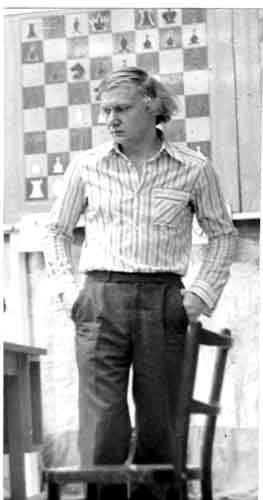

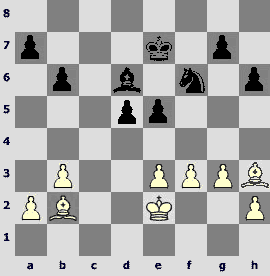

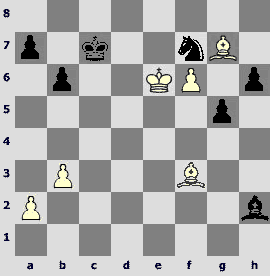

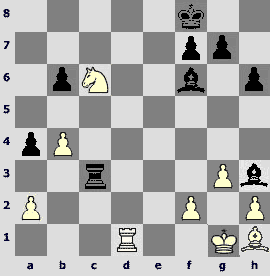
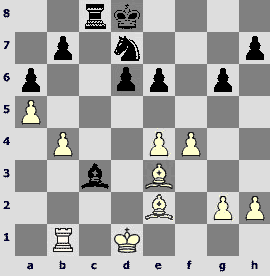
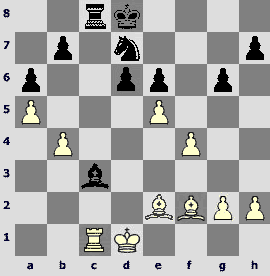
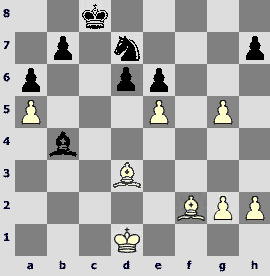
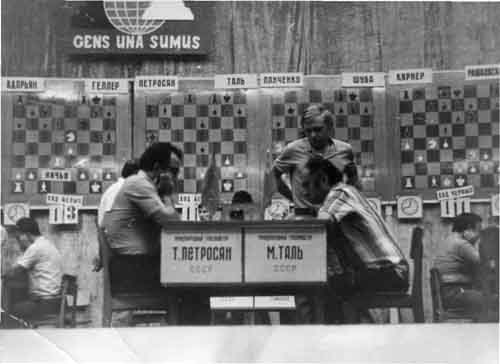
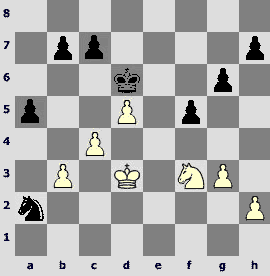
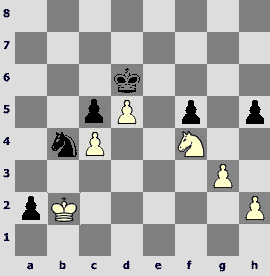

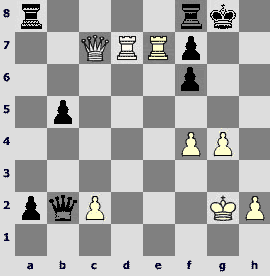
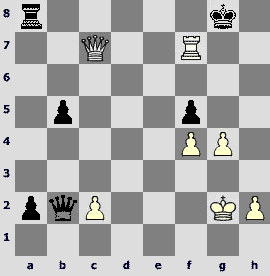
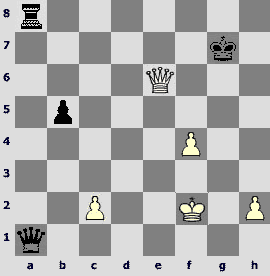
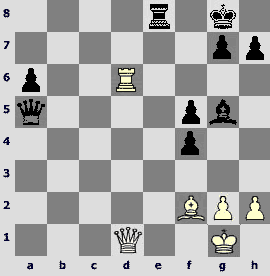
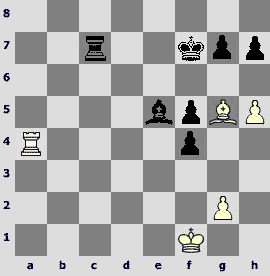



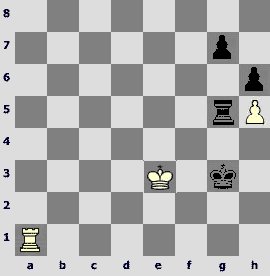
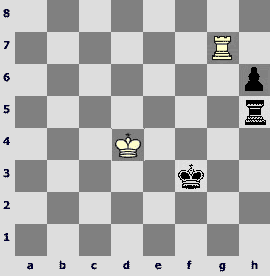
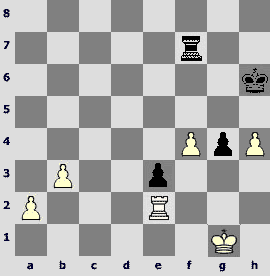
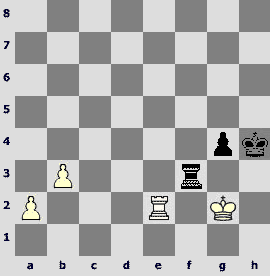
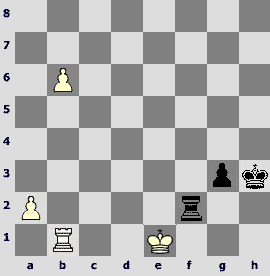
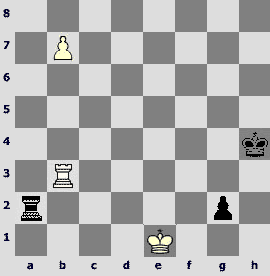

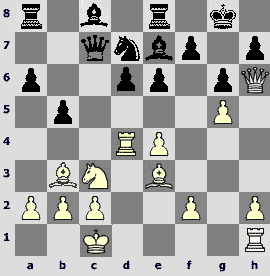

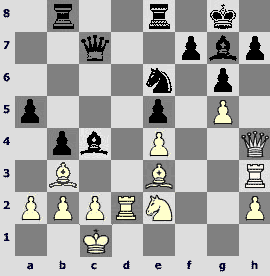
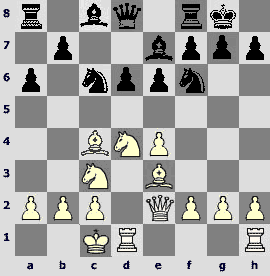
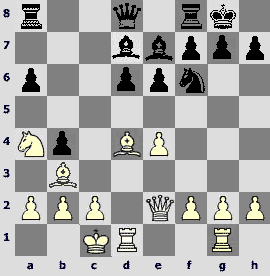
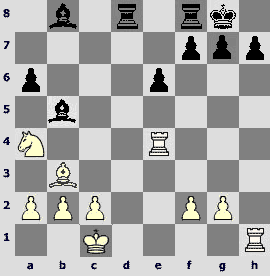
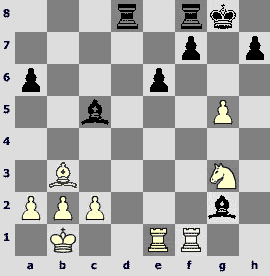
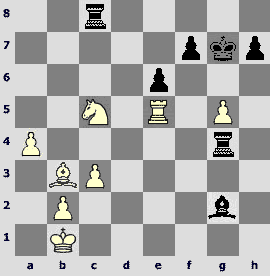
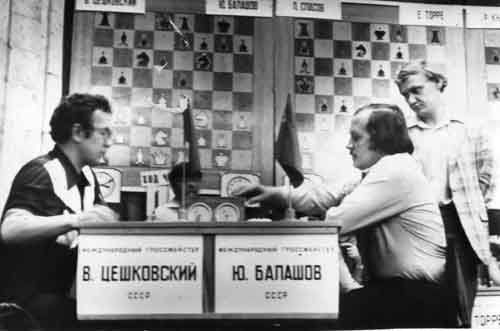
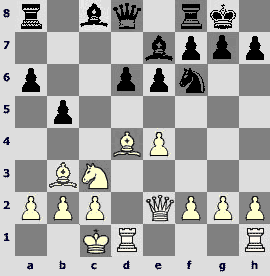
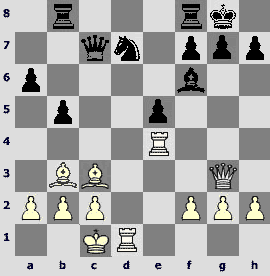
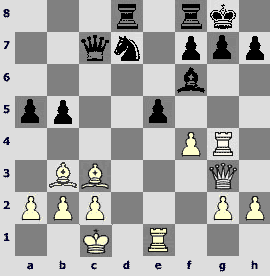
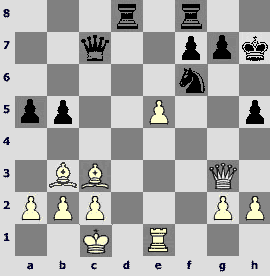
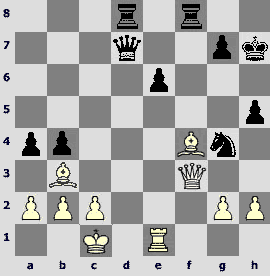
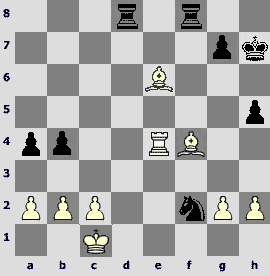


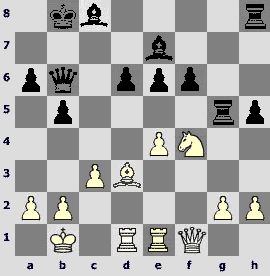
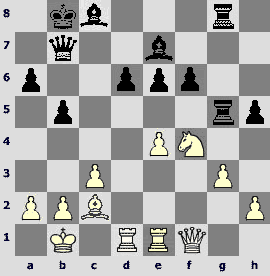

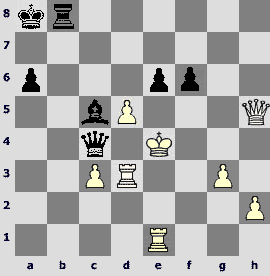
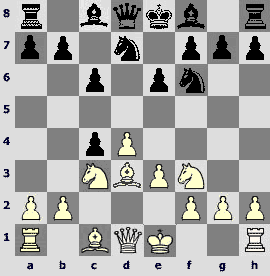
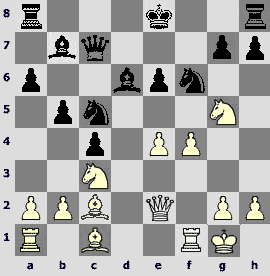
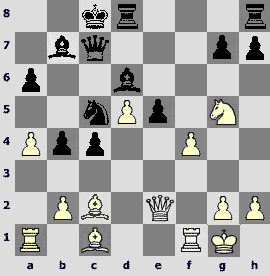
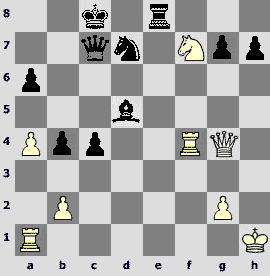
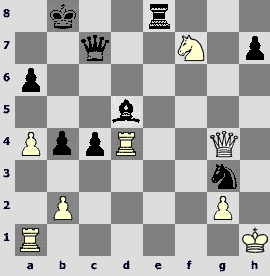
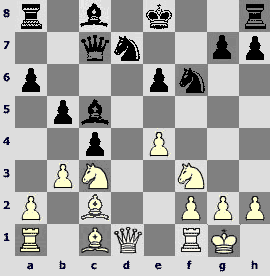

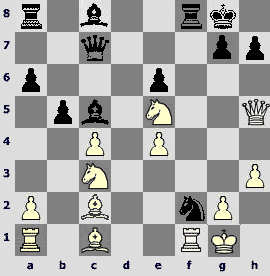
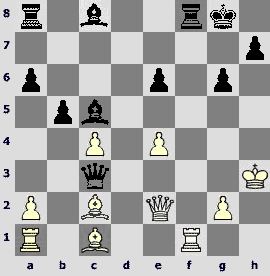
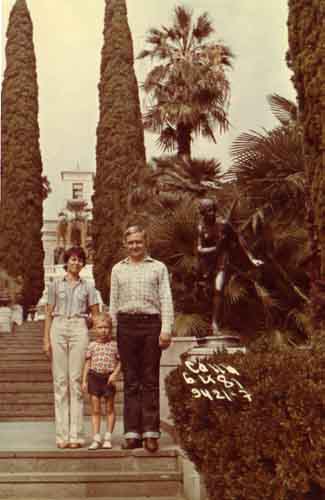
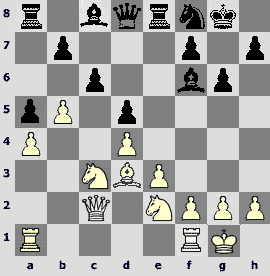


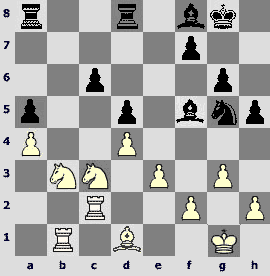
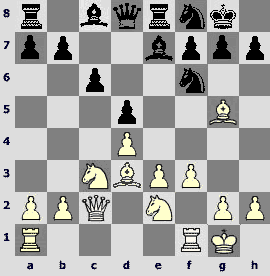
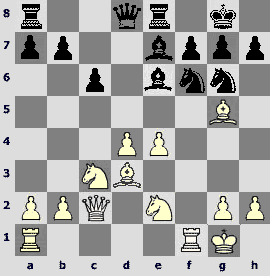
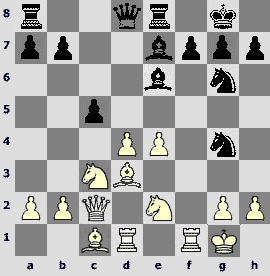

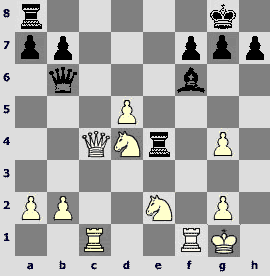

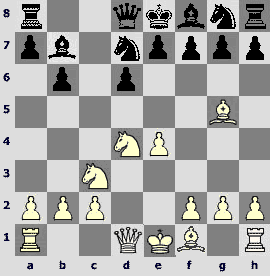
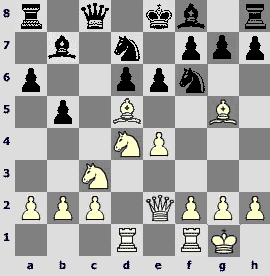
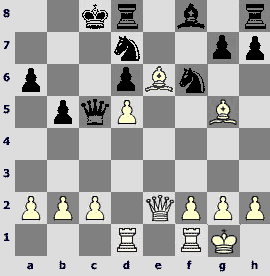
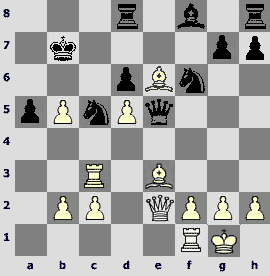
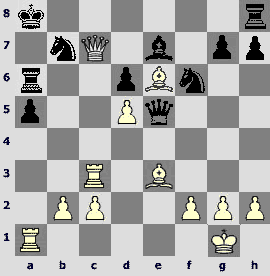
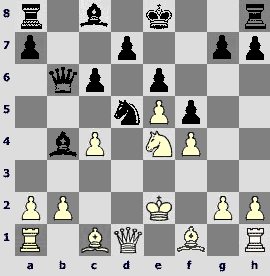
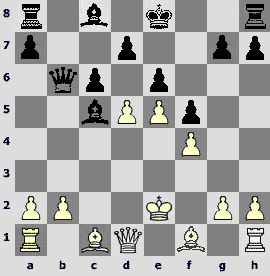

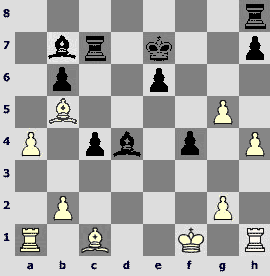
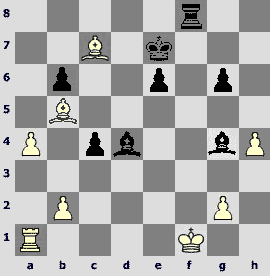


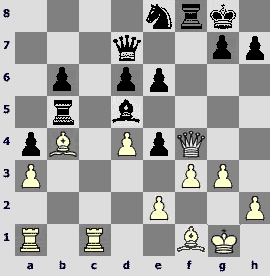
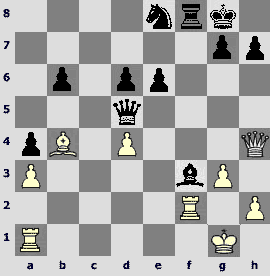
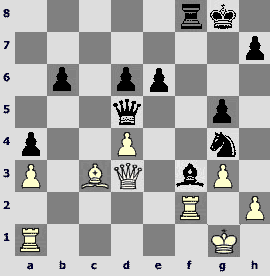
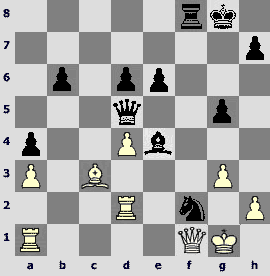
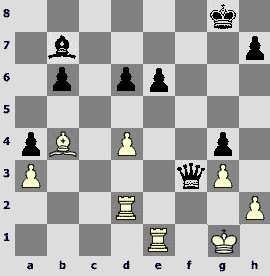
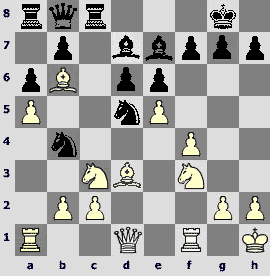
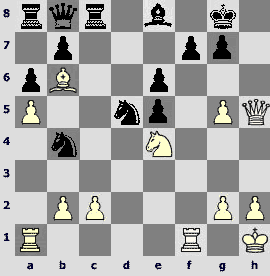
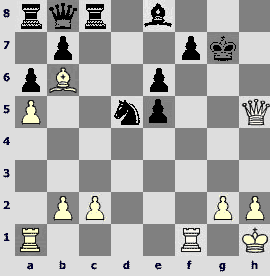
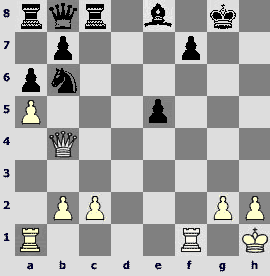



Discuss in forum